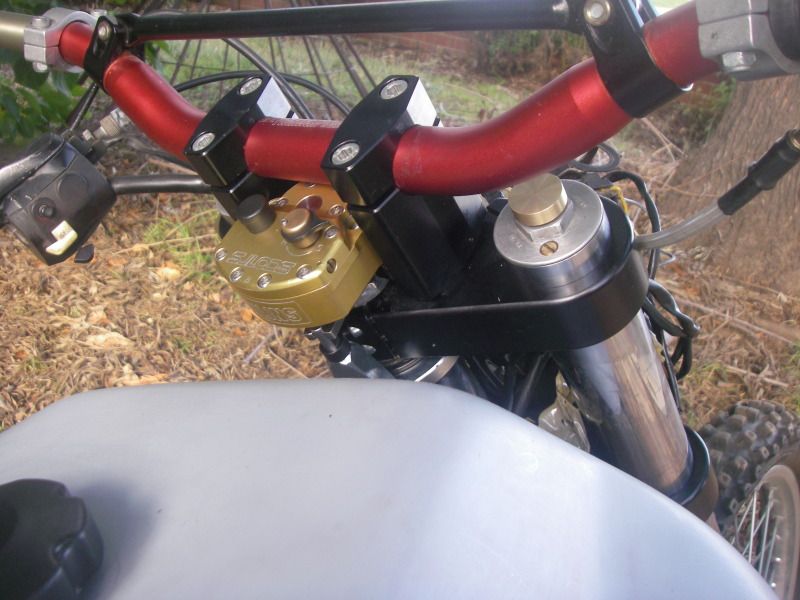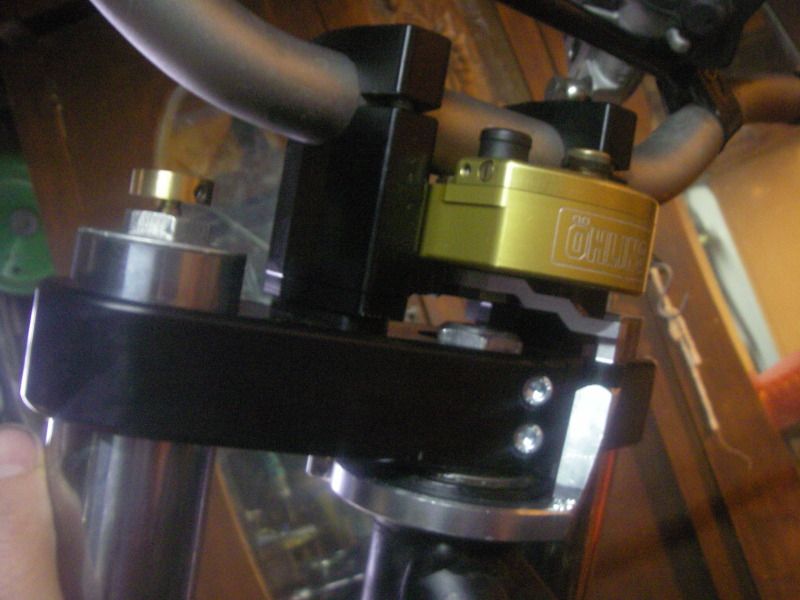Hi Duane,
I've done a fair bit of research into the newer ones, but haven't used mine yet (aside from garage testing

), and have no experience of the older ones, so I don't have a lot to add other than theory.
Suffice to say, the old hydraulic as you describe and the newer (such as the Scotts I have) dampers sound very very different. I wonder if there was high and low speed damping on those old ones, or if they just had something in the middle (basic linear damping?) Sounds like they were damping pretty heavily if they effected steering that much- and if it was purlely linear damping then I imagine they would have
had to dampen pretty heavily in the middle to be at all effective at either low or high speed movements.
Like the upgrades in suspension that have occurred over the same periods (cartridges and valves with tunable shim stacking instead of simple damper rods and orifces), I would guess that steering dampers have had similar advancements. Ideally on the base valve this would allow one to draw the line where damping begins (so it doesn't noticeably effect 'normal' steering input but does reduce things like headshake) and on the high speed valve you set where and how much it absorbs larger sudden inputs that overwhelm the base valve (but don't overly limit your ability to make sudden steering changes).
On these new adjustable dampers, most people for most riding conditions, seem to set the low speed damping to the point where you can barely feel it. If set right, it still works, when you need it, but unless you have it turned up quite high it should not significantly effect ones ability to hit something like a target with your tyre 50 ft away.
One may want to turn the low speed circuit up for things like sand riding or windy conditions. The high speed damping you won't even notice until you hit a big rock or pothole or something that tries to deflect your wheel- maybe halfway as you are aiming for that coin- it that case, it might actually allow you to stay on track and hit that coin.
The Scotts is somewhat complicated as when you turn the low speed damping down, it makes the high speed damping more sensitive (not sure of the internal mechanism of why this happens). I've read through all sorts of set-up guides and experiences- it seems like small inputs make rather large changes- one needs to experiment a bit. Once you get a good balance between your high and low speed damping you set it there and then after that mostly just tweak the low speed (base valve) dial up or down a click or two for different conditions if or when required.
Like you say, a damper
could be used as a band aid for an unstable, badly set up bike. Ideally that is not what people are doing, and not what I am planning to do. My new front end has been re-sprung (custom wound) for this application, and will be re-valved if needs be (though with the adjustable compression and rebound on these forks, and playing with different oil weights, apparently this should not be required).
I intend to get this bike feeling very good before I try the damper, and I know what I want out of the damper once this is done.
It would also seem that there is no 'need' for a steering damper on a solo bike, and many people don't even seem to notice much effect when they put one on.... until they take it off again.
I guess that is the sign of a modern damper that is well set-up- you don't notice it is there until you take it off and re-ride what you have already ridden. Basically they can be a helping hand to keep you stable and on track in challenging situations- too much 'helping hand' may have negative effects, and that is what all the adjustability is for.
While I don't doubt most modern dampers are bought for the farkle/bling element, there are a lot of converts who claim they will never again own a bike without one.
Most rally racers use them, and the Paris Dakar site even goes as far to suggest them
To reduce the risk of high speed 'tank slappers' consider fitting a steering damper. Pick a model that fits either on the top or bottom fork yoke.
http://www.dakar.com/2006/presentation/ ... er_04.html
I'll happily report back on mine when I actually have some saddle time with it, right now I'm kinda talking out my arse





